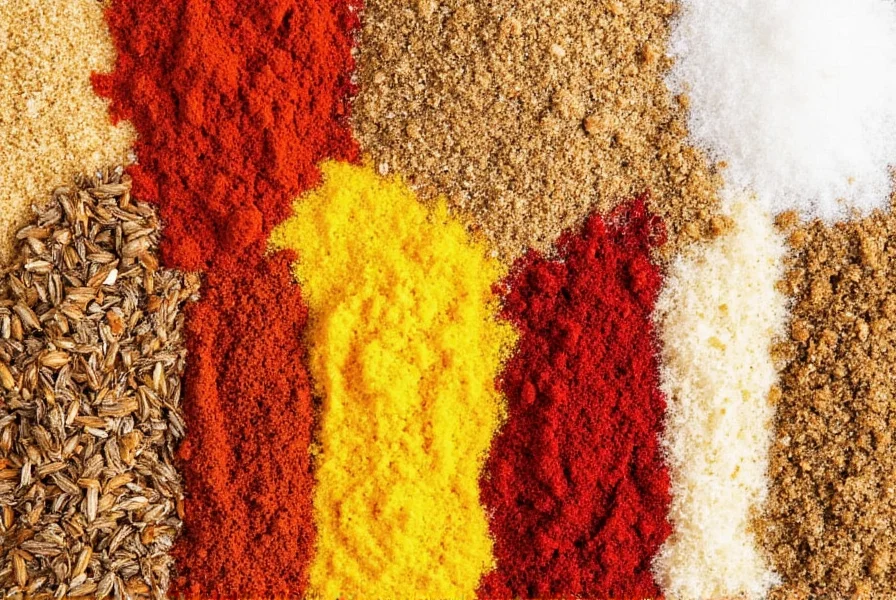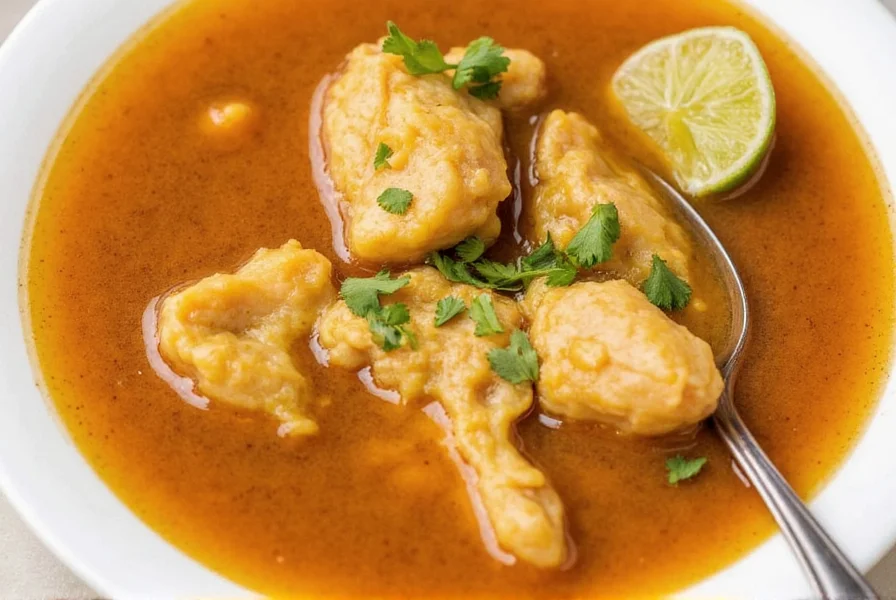The right spices can transform chicken soup from bland to brilliant. Here are the top 10 essential spices for chicken soup, with detailed usage tips for each.
| Spice | Flavor Profile | Best For | Tips for Use |
|---|---|---|---|
| Bay Leaf | Earthy, slightly floral | Broth depth | Add whole during simmering, remove before serving |
| Thyme | Herbaceous, minty | Classic flavor | Fresh or dried; best when added early |
| Parsley | Grassy, fresh | Finishing touch | Add at the end for brightness |
| Nutmeg | Sweet, warm, earthy | Cream-based soups | Use sparingly — a little goes a long way |
| Black Pepper | Peppery, sharp | Layered seasoning | Freshly ground works best |
| Paprika | Smoky, sweet | Color and warmth | Mild Hungarian paprika preferred |
| Garlic Powder | Pungent, savory | Base flavoring | Better than raw garlic for even distribution |
| Onion Powder | Umami-rich, sweet | Depth without texture | Add with other base spices |
| Dill | Herbaceous, citrusy | Eastern European styles | Fresh dill adds zing; dried more mellow |
| Turmeric | Earthy, peppery | Golden hue and health benefits | Pair with black pepper for absorption |
How to Use These Spices Like a Pro
You've got your spices — now let's talk strategy! Here are a few expert-approved techniques to get the most out of every pinch:
- Bloom It: Toast whole spices like bay leaves, cloves, or star anise in oil before adding liquid. This unlocks their essential oils and intensifies flavor.
- Layer It: Add different spices at different stages. Fresh herbs like parsley and dill go in at the end. Whole spices go in first. Salt and pepper taste-test as you go.
- Balance It: If your soup tastes flat, a dash of vinegar or lemon juice can brighten things up. If it's too salty, stir in a potato to absorb some salt (and remove it before eating).
- Store It: Keep your spices sealed and away from heat. Ground spices lose potency after 6 months; whole spices can last up to a year.

Buying Guide: Picking the Best Spices for Soup
1. Bay Leaves
- Features: Whole dried leaves, typically Mediterranean or California varieties
- Advantages: Adds herbal, pine-like aroma to broths
- Use Cases: Classic chicken noodle, slow-cooked soups
2. Thyme
- Features: Tiny leaves on woody stems; available fresh or dried
- Advantages: Earthy, slightly minty flavor that enhances savory dishes
- Use Cases: French-style soups, rustic stews, herb-infused stocks
3. Nutmeg
- Features: Available as ground or whole seed (grater included)
- Advantages: Adds warmth and depth to creamy soups
- Use Cases: Cream of chicken, butternut squash soup, bisques
4. Black Pepper
- Features: Whole peppercorns or pre-ground; preferably freshly ground
- Advantages: Enhances other spices, adds bite and complexity
- Use Cases: Any soup base, seasoning blends, finishing touches
5. Paprika
- Features: Sweet, smoked, or hot varieties; rich red color
- Advantages: Adds warmth, sweetness, and visual appeal
- Use Cases: Goulash-inspired soups, chili-based broths, garnishes
Final Thoughts: Spice It Up, Don't Dull It Down
Chicken soup may be simple in concept, but with the right spices, it becomes a masterpiece of flavor. From humble bay leaves to vibrant turmeric, each spice plays its part in creating that perfect spoonful of warmth.

Remember: cooking with spices isn't about following rigid rules — it's about exploration, tasting, and adjusting. Start with our list of top 10 spices, then experiment until you find your signature flavor.
So next time you're ladling up a batch, don't settle for bland. Reach for those spices and transform your soup into a symphony of flavor!
Frequently Asked Questions About Spices for Chicken Soup
How much of each spice should I add to my chicken soup?
Start with conservative amounts: 1-2 bay leaves per pot, 1 teaspoon of dried thyme, 1/4 teaspoon of nutmeg, and 1/2 teaspoon of black pepper. You can always add more as you go, but you can't take it out once added. Remember to taste as you cook and adjust accordingly.
When is the best time to add spices to chicken soup?
Different spices work best at different stages: whole spices like bay leaves should go in at the beginning to infuse flavor throughout cooking; dried herbs like thyme can be added midway through; and fresh herbs like parsley should be added in the last 5-10 minutes. Delicate spices like nutmeg are best added toward the end of cooking.
Can I use fresh spices instead of dried?
Absolutely! Fresh spices often have more vibrant flavor. As a general rule, use three times the amount of fresh herbs compared to dried (since dried herbs are more concentrated). For example, if a recipe calls for 1 teaspoon dried thyme, use 1 tablespoon fresh thyme instead.
What's the most common mistake people make with spices in chicken soup?
Over-salting early in the cooking process is the most common error. Since broth reduces as it simmers, salt concentration increases. It's better to season gradually and taste as you go. Another common mistake is adding all spices at once rather than layering them throughout the cooking process.
How can I fix chicken soup that's become too spicy?
If your soup has become too spicy, try these remedies: add more broth or water to dilute the spice level; add a dairy component like cream or yogurt; include a sweet element like a pinch of sugar; or add starch like cooked rice or potatoes which can absorb some of the heat. Remember, prevention is better than cure - always add potent spices gradually.
How long do spices stay fresh for chicken soup preparation?
Ground spices typically stay fresh for 6 months, while whole spices can last up to a year. To test if your spices are still potent, rub a small amount between your fingers and smell - if the aroma is weak, it's time to replace them. Proper storage in airtight containers away from heat and sunlight extends their shelf life.










 浙公网安备
33010002000092号
浙公网安备
33010002000092号 浙B2-20120091-4
浙B2-20120091-4